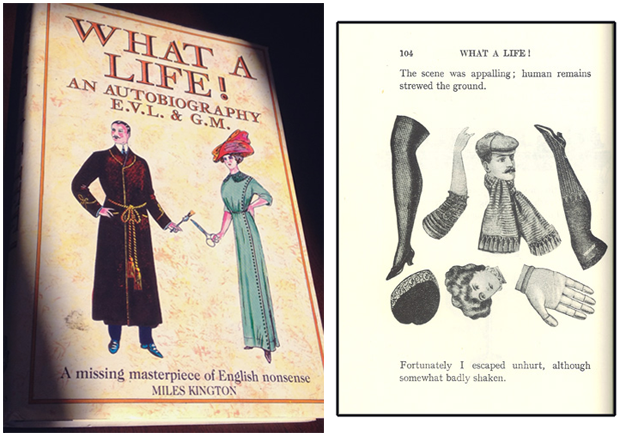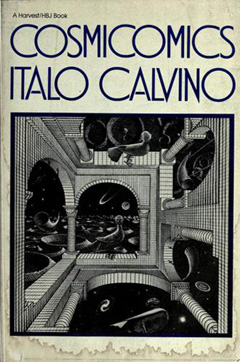
Dr. Thoreau, a fastidious experimentalist in the art of cultural vivisection, invites you to tour his growing laboratory.
You might begin by reading the ABOUT page...
Or, feel free to explore the MadBlog...
Or, visit our newly added Cinedrome, a department that will house audiovisual experiments...
Following where the internet leads... Starting from a mildly interesting post found on a social media site, the Doctor takes you on a curated tumble down the rabbit hole. Have some time to kill? Tired of your own threads and browsing patterns? Click here for the first trial version...


A true milestone in cultural vivisection, this 1911 novel traces a life story primarily through illustrations that the authors clipped from the pages of a Whiteley's department store catalog. Funny and surrealist before there were Surrealists. Highly recommended!
 Cosmicomics
Cosmicomics Calvino was a unique writer—novelist, journalist, critic—who developed the ability “to make fantastic webs of prose to which all things adhere,” as his neighbor Gore Vidal wrote. Cosmicomics is an essential work of surreal science fiction, comprised of twelve memoir-like musings written by a being named Qfwfq: witness to, and key participant in, the entire history of the Universe, or more precisely, witness to, and participant in, several possible processes by which things like history and the Universe came into being. Each story emerges out of a different scientific theory, and most of the theories are obsolete. My favorite line comes near the end of the final chapter, after Qfwfq has just explained the invention of vision and images (after all, he has been consious since long before there were such things): “At that moment a school of tiny anchovies, barely born, passes before me, so tiny that in each little white fish it seems there is only room for the eye’s black dot, and it is a kind of eye-dust that crosses the sea.”
“Perhaps the definition of a box could be as a kind of forgotten game, a philosophical toy of the Victorian era with poetic or magical moving parts.” If only all made-for-TV documentaries could be exactly like this! Cornell, collector-rearranger extraordinaire, is best known for re-editing film prints found in the trash, and for his boxes, little cabinets of curiosity that today feel like self-contained analog Internets encountered in a dream.
An exquisite example of cultural vivisection in the form of found footage videomaking.
“Graffiti removal is a layered and complex art form, and what makes the removal movement so significant is that it is unconscious, accidental, and collaborative.”
* Note: Since this video is embedded from YouTube, it comes with pop-up advertisements near the beginning. Usually I would apologize for this, but here it is perfect. At the time of posting, the ad that pops up is promoting a “graffiti remover kit.” Unconscious art supplies, advertised unconsciously!